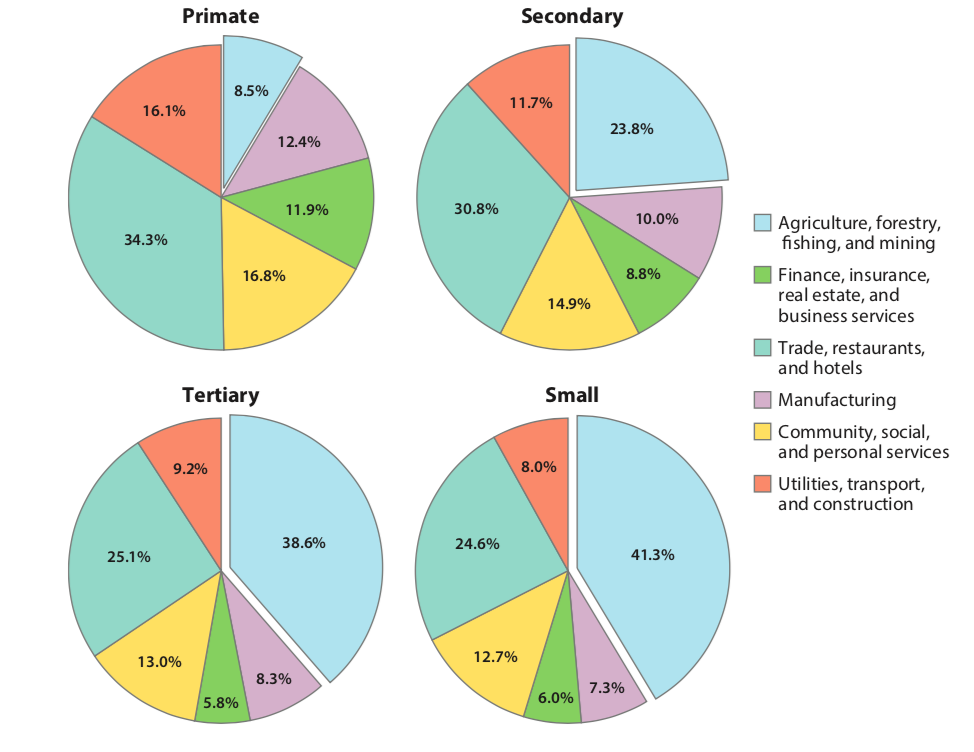
Urbanisation and structural transformation in Africa
Urbanisation is central to Africa’s development, yet the basic facts of the process remain a puzzle to social scientists and policymakers alike.
Economists typically explain urbanisation through the combination of two forces: agricultural push and industrial pull. Agricultural gains provide the initial impetus to urbanisation because they allow food requirements to be met with less workers. This frees up labour to leave rural farming in favour of urban factory work. If you take England’s industrial revolution for example, it was only because agricultural yields had doubled over the 1600s that this tiny island was able to become a global powerhouse in manufacturing.
Africa’s urbanisation does not conform neatly to these past trends. As a region, it has not yet experienced a “green revolution”. In fact, relative to the rest of the world, African countries have performed relatively poorly in terms of cereal yields – a proxy for agricultural productivity. Urbanisation in African countries has also proceeded without the development of major industrial sectors. As Table 1 shows, manufacturing has been in decline since the 1990s and relatively far behind the levels once reached in East Asia or Latin America. Although services contribute highly to African GDP, there’s been limited development of competitive sectors such as financial and business services. This lack of structural transformation causes many observers to question Africa’s prospects for long-term development (UNECA 2015, African Union 2015).
Africa's urbanisation
The experiences in Africa have also forced economists to rethink traditional models of urbanisation. With neither agricultural push nor industrial pull, why are people in African countries moving to cities so quickly?
Recent evidence suggests that resource export earnings play a key role in driving people towards cities (Gollin et al. 2016). Hence, the more urbanised countries in Africa tend to be those with the largest natural resource bases. The outcome, however, is that cities grow more as a response to resource income spending and the associated consumption of local services in cities, rather than the growth of large-scale, productive industries like manufacturing.
Employment in African cities
If industry is not driving urban growth, then what does urban employment look like in African cities? In Figure 1 below, we present the employment compositions from 11 African countries based on city-level census data over the 2000s. The results suggest that there is a high degree of primary sector employment (i.e. agriculture, fishing, forestry, and mining) in African cities, regardless of size (Henderson and Kriticos 2018). Even among the largest cities, there is a small role for manufacturing and high-value tradable services, at approximately 10-12%, despite the fact that these cities should offer large advantages from economic clustering. Consequently, this may be a lost opportunity for economic growth in Africa.
 Figure 1: Employment compositions across African cities (Henderson and Kriticos 2018)
Figure 1: Employment compositions across African cities (Henderson and Kriticos 2018)
Outside of Africa, the range for urban primary employment is between 4.1-14.4%. What is further surprising is the extent of agricultural employment amongst urban residents in the smaller cities. According to the data, these areas play a crucial role in housing and servicing workers in the primary sector.
A forward-looking research agenda
These estimates are surprising and it is important to caveat that some contribution may be due to misclassification in census data: either of locations as “urban” versus “rural”, or of the employment sector, for instance, if individuals form part of the agricultural value chain but are working in cities in processing and retailing, rather than traditional farming.
More research is needed to appease these concerns using internationally consistent definitions of urban areas and with more detailed economic censuses and/or comparable employment survey data.
These numbers give a preliminary indication of the employment distribution that may be overstated. However, the fact the census data may misclassify certain jobs as primary, is also an indication that these jobs do not conform neatly to typical higher-value industry sectors that we have associated with structural transformation elsewhere.
Policy implications: New service sectors the future?
There are vast productivity wins to be made when countries transition towards non-agricultural employment. This is why growth theory has so often focused on the process of structural transformation, and by extension the movement from rural to urban areas. The problem for many African countries seems to be that structural transformation and urbanisation are not well linked, hence the lack of high-value industrial and service jobs in urban areas.
In other parts of the developing world, larger secondary cities tend to be thriving due to industrialisation, but for several African countries where there is very little industry nationally, the role and prospective growth of secondary cities is challenged.
In an accompanying IGC Growth Brief, we discuss how new service sectors are emerging which offer high-value job creation and many of the same productivity benefits of traditional manufacturing. These could offer a new and complementary growth path for many African cities, but as we discuss in the brief, they require active public policy decisions to support their growth.
Editor’s Note: This blog is based on this growth brief: The prospects for manufacturing-led growth in Africa’s cities
This blog is part of the IGC’s 10 year celebration series. This blog is linked to our work on cities driving growth.
References
African Union (2015), “Agenda 2063: the Africa we want”, African Union Commission.
Gollin D, R Jedwab, D Vollrath (2016), “Urbanisation with and without industrialisation”, Journal of Economic Growth, 21(1):35–70
UNECA (2015), “Leveraging urbanisation for Africa’s structural transformation. ECA’s contribution”, United Nations Economic Commission for Africa.


